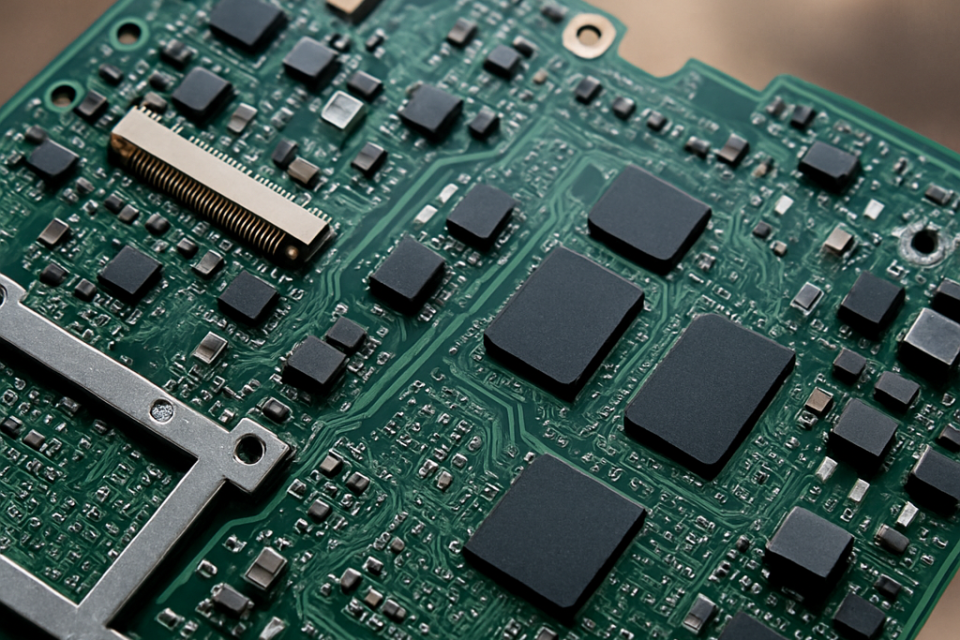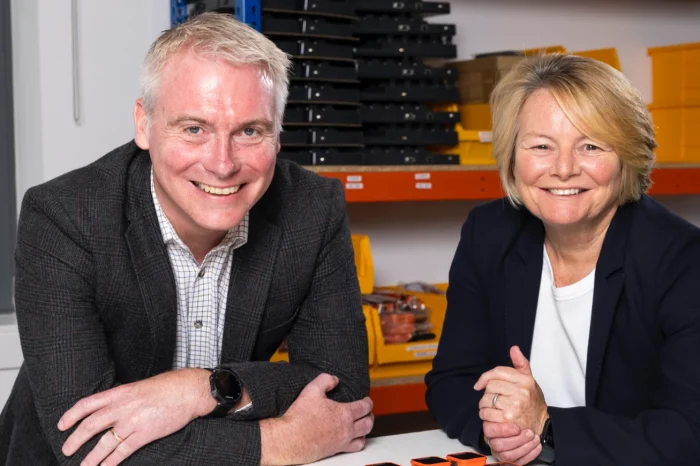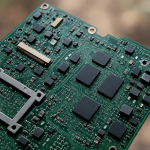Nottingham scientists partner to develop ultra-thin semiconductors to reduce AI energy consumption

A consortium of researchers from Queen Mary University of London, the University of Nottingham, and the University of Glasgow has secured a £6 million grant from the Engineering and Physical Sciences Research Council (EPSRC) to investigate atom-thin semiconductors. The goal is to reduce the electricity demand of AI data centres and high-performance computing systems.
The initiative, titled “Enabling Net Zero and the AI Revolution with Ultra-Low Energy 2D Materials and Devices (NEED2D),” will be led by Queen Mary University of London. Over 20 industrial and academic partners will contribute a further £2 million to support the development of new materials and the prototyping of low-energy electronic components such as transistors. The research will support the creation of a new UK electronics industry based on two-dimensional semiconductors, as an alternative to conventional materials.
Professor Sir Colin Humphreys of Queen Mary University of London, who is heading the programme, said:
“Our approach is to tackle the problem at the source: by reducing the power these centres consume in the first place. To do this we will use the latest new materials, called two-dimensional materials, which are atomically thin. This will save over 90% of the energy required by data centres and computers, reduce the cost of electricity, and help to enable Net Zero.”
The electricity consumption of AI data centres in the UK is forecast to rise sixfold by 2034, accounting for an estimated 30% of the country’s total usage. This would cost billions of pounds and pose challenges to climate targets. Two-dimensional semiconductors are being explored as a method to reduce energy consumption in computing and support sustainable development in the tech sector.
Professor Humphreys added:
“Leading semiconductor industries including TSMC, Intel and Samsung have already recognised 2D materials as the future, placing them on their technology roadmaps for 2040. Our vision is to make the UK the world leader in ultra-low energy 2D devices well before 2040.”
“You will need to charge your mobile phone weekly instead of daily!” he continued.
The materials under development, such as graphene and its derivatives, allow faster electron movement than silicon, improving energy efficiency and reducing waste heat. Their properties make them suitable for further miniaturisation, vertical stacking, and integration into emerging computing systems, including quantum and neuromorphic architectures.
Professor Amalia Patanè, deputy lead of the project at the University of Nottingham, commented:
“We are excited about the potential impact of our research and the project’s comprehensive approach, spanning from computational modelling and materials synthesis to device fabrication and industrial engagement. 2D semiconductors behave in a fundamentally different way from their bulk (3D) counterparts and their unique electronic properties can support entirely new effects at the atomic scale. We will advance the precise engineering of 2D semiconductors, pushing the limits of what we can create, probe and exploit.”
Professor David Moran from the University of Glasgow noted:
“This is a truly exciting project that will utilize the extensive state of the art semiconductor fabrication and prototyping capabilities of the James Watt Nanofabrication Centre at University of Glasgow and complementary capabilities at Queen Mary and University of Nottingham to develop truly next generational low-power electronic devices and systems.”
The three universities have long-standing expertise in 2D materials and semiconductor science. Professor Humphreys has previously commercialised graphene through his company Paragraf. The NEED2D project builds on earlier research, aiming to progress from laboratory discoveries to working prototype devices, particularly in transistor development.
As London remains the centre of Europe’s largest data centre market, the transition to low-power 2D transistors could enhance the UK’s position in technology and reduce electricity costs. The research could also assist the UK in meeting climate goals, support the growth of a new microelectronics sector, and contribute to job creation.






